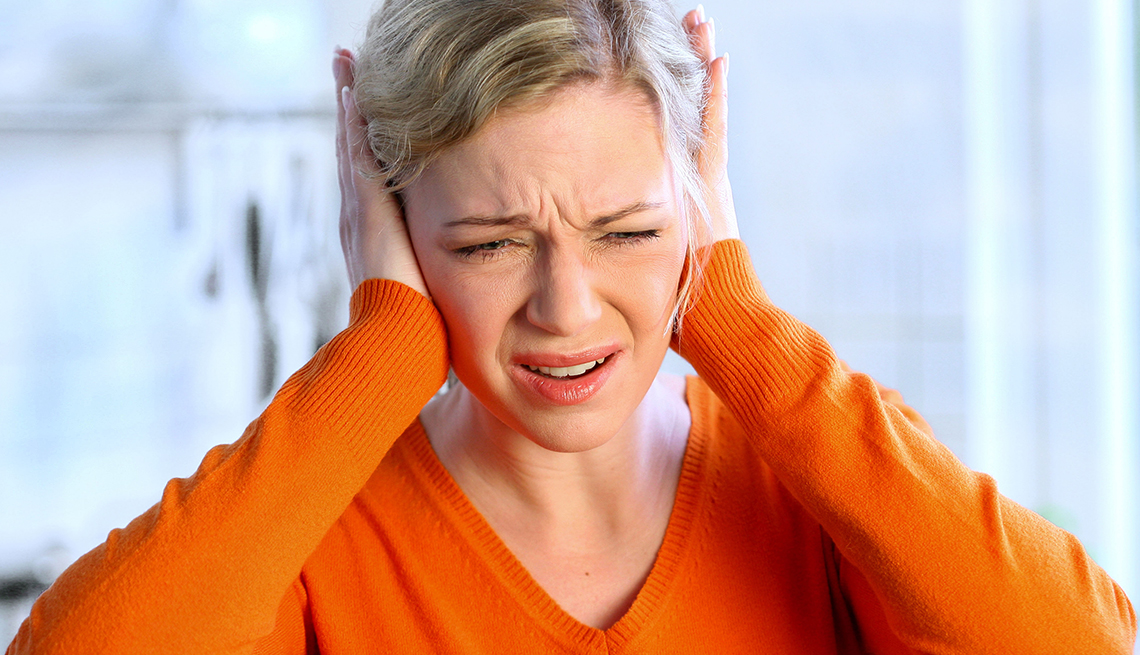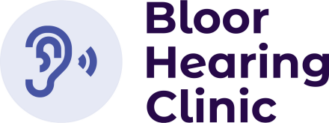
Our Blog
Unilateral Hearing Loss: Diagnosis and Management Guide

Unilateral Hearing Loss (UHL) is a challenging and complicated condition experienced by many people. In Canada, 37% of adults with at least slight hearing loss have UHL. While only affecting one ear, UHL can still cause significant difficulties with understanding speech and distinguishing words. Due to the potential impact on communication, understanding the prevalence of UHL is crucial for raising awareness about the need for proper diagnosis and management. In this guide, we’ll explore UHL’s symptoms, causes, effects, and management options.
Unilateral Hearing Loss: Definition
Unilateral hearing loss is a partial or complete loss of hearing in one ear. This means hearing is significantly reduced or absent in one ear while the other ear functions normally. In contrast to it being referred to as single-sided deafness or SSD, the two actually differ. SSD happens when the affected ear has completely lost hearing ability, essentially having no usable hearing in one ear. It’s a much more extreme form of UHL and severe to profound unilateral hearing loss in one ear.
On the other hand, UHL refers to hearing loss in one ear with some degree of hearing remaining. It can range from mild to profound and may arise from issues in the middle ear, inner ear, or auditory nerve. Though it may seem minor than SSD, this type of hearing loss can significantly affect everyday life, including communication, safety, and quality of life.
Unilateral Hearing Loss Statistics
Unilateral hearing loss affects around 2.5% to 6% of school-aged children, with a smaller incidence at birth of roughly 0.6 to 0.7 per 1000 live births. In Canada, around 79% of children and youth with hearing loss experience unilateral hearing loss (affecting only one ear). Here are some more data about the prevalence of UHL:
One in five Canadians aged 20-79 with hearing loss has an impairment. (StatCan)
Up to 35% of children with unilateral hearing loss experience grade repetition or require significant educational assistance. (ResearchGate)
77% of adults aged 40-79 with high-frequency hearing loss in Canada are unaware of their condition. (StatCan)
In developed countries, about 2 in 1,000 newborns are born with significant hearing loss, and 1 in 3 of these cases affects one ear. (ScienceDirect)
Over 430 million people globally need rehabilitation for disabling hearing loss, including UHL. (WHO)
By 2050, over 700 million people will have disabling hearing loss. (WHO)
Unilateral Hearing Loss Symptoms
UHL symptoms can vary based on severity and when the condition develops. Some people are born with it, while others lose hearing in one ear later in life. Like other symptoms of hearing loss, the signs may be subtle at first but often become more noticeable over time. Common symptoms include:
Difficulty localizing sounds: Having trouble identifying where sounds are coming from
Tinnitus: Ringing or buzzing in one ear
Reduced speech comprehension: Having difficulty understanding speech, especially in noisy environments
Vestibular disturbances: Balance issues or dizziness
Altered perception of volume: Having difficulty estimating how loud a noise is
Difficulty multitasking: Having less concentration due to cognitive overload in the brain
“Head shadow” effect: Not hearing sounds that bend around the side of the normal hearing ear
Asking others to repeat themselves: Having difficulty understanding what others are saying
Withdrawing from social situations: Feeling embarrassed, frustrated, anxious, or insecure
Sensorineural Hearing Loss
Sensorineural Hearing Loss (SNHL) refers to hearing loss caused by damage to the inner ear or auditory nerve. UHL can be a type of SNHL if the damage to the inner ear is only present in one ear, meaning the key difference is the affected area (one ear vs. both ears) rather than the mechanism of hearing loss itself. SNHL is often permanent and not easily treated with surgery.
When UHL develops suddenly, it often involves the inner ear or auditory nerve and requires immediate medical attention. Sudden hearing loss is an emergency requiring prompt consultation with a healthcare provider.
Unilateral Hearing Loss Causes
UHL can have many causes in both children and adults. These causes include genetic factors, infections, trauma, and exposure to noise.
In Adults
In adults, causes of UHL include:
Exposure to noise: Excessive noise exposure can cause hearing loss
Acoustic neuroma: A benign tumor on the auditory nerve
Trauma: Head injuries or exposure to loud noises can damage the ear structures
Infections: Conditions like labyrinthitis or meningitis may result in hearing loss
Autoimmune disorders: Certain diseases can target the inner ear
In Children
In children, causes often differ and may include:
Congenital factors: Structural issues in the ear or genetic conditions
Ear infections: Recurrent or untreated middle ear infections
Birth complications: Prematurity or low birth weight
Maternal infections: Infections like cytomegalovirus (CMV) can cause hearing loss in babies
Exposure to ototoxic drugs: Medications that harm the auditory system
Other causes of UHL include Microtia, Atresia, Ménière’s disease, and Circulatory disorders.
Effects of Unilateral Hearing Loss on Hearing
UHL alters how individuals perceive and process sound. With one ear functioning properly and the other impaired, people with UHL often face unique challenges in everyday listening situations.
Head Shadow Effect
The head shadow effect occurs when the head blocks sound waves from reaching the normal hearing or good ear. This creates difficulties in hearing sounds that originate on the side of the deaf ear, particularly high-frequency sounds that are crucial for understanding speech.
Localized Hearing
With only one ear functioning, sound localization—the ability to pinpoint where a sound is coming from—is compromised. This limitation reduces spatial awareness and makes navigating noisy environments or reacting to potential dangers more difficult. In settings with background noise, distinguishing between sounds becomes even more challenging, further affecting communication and safety.
Unilateral Hearing Loss Complications
Unilateral hearing loss can lead to several complications that affect both hearing and quality of life:
Speech Understanding: Individuals with UHL often struggle to follow conversations in noisy or group settings.
Listening Fatigue: Compensating for the hearing deficit requires extra mental effort, leading to increased fatigue over time.
Social and Cognitive Effects: Without treatment, UHL can result in social withdrawal, frustration, and even cognitive decline as the brain underutilizes auditory input from the impaired side.
Diagnosing Unilateral Hearing Loss
Diagnosing UHL involves a thorough evaluation. Hearing tests in Canada provide audiograms and speech recognition tests to determine the extent of hearing loss in each ear, pinpointing specific frequencies affected. CT or MRI scans are used to detect structural abnormalities, such as acoustic neuromas or congenital issues, that may cause hearing loss. The healthcare provider also reviews the patient’s history of illnesses, injuries, or noise exposure to help identify the cause and guide treatment.
Treatment and Management
To manage UHL, there are several treatment options and strategies that can improve hearing and help individuals adapt to their condition, starting with Toronto hearing aids.
Hearing Aids
Contralateral Routing of Signals (CROS) hearing aids are designed for individuals with UHL. It transmits sound from the non-hearing ear to the better-hearing ear, allowing users to hear sounds more effectively, even if they originate from the side of the impaired ear. This helps restore a sense of balance and improves overall hearing capability.
Cochlear Implant
For profound unilateral deafness, a cochlear implant can restore some hearing by directly stimulating the auditory nerve. This device bypasses the damaged part of the ear and helps restore some degree of hearing. While cochlear implants are not suitable for all cases, they are a potential option for severe hearing loss that cannot be addressed with hearing aids.
Bone Conduction Aids
Bone conduction devices bypass the middle ear and transmit sound vibrations directly to the inner ear. This method can be effective for those who cannot use traditional hearing aids due to issues in the outer or middle ear.
Remote Microphone
These devices amplify sound from specific directions to improve hearing in noisy environments. These are particularly useful in social settings or work environments where background noise makes it harder to hear speech clearly.
Medication
Medical treatment, such as corticosteroids, may address underlying conditions like infections or inflammation caused by UHL. Early intervention with medication can help manage these issues before they cause long-term hearing damage.
Management Strategies
Some individuals choose not to pursue treatment and instead adopt strategies, such as:
Strategic Positioning: Positioning oneself in conversations to favor the better-hearing ear can make communication easier.
Relying on the Better-Earing Ear: Individuals may focus on using their better-hearing ear for listening in challenging environments, such as noisy spaces.
Assistive Devices: Using hearing aids or other listening devices can reduce the effort needed to hear, making it easier to engage in conversations.
Regular Hearing Tests: Monitoring changes in hearing through regular audiological check-ups ensures any deterioration is detected early.
Risk Reduction for Unilateral Hearing Loss
Preventing further hearing loss and protecting hearing health is important. Several steps can help reduce the risk of worsening UHL:
Prompt Ear Infection Treatment
Treat ear infections early to prevent complications.
Hearing Protection
Use hearing protection, like earplugs, in noisy environments.
Reduced Noise Exposure
Avoid prolonged exposure to loud sounds to protect both ears.
How You Can Care for Yourself
Living with UHL requires some lifestyle adjustments to maintain communication and hearing abilities:
Position yourself strategically in conversations to favor your better hearing ear.
Use assistive devices to reduce listening effort.
Schedule regular hearing tests to monitor any changes.
Unilateral Hearing Loss in Children
UHL in children is considered more delicate because while children with UHL may appear to be hearing normally with their good ears, they can still experience significant challenges in speech perception, sound localization, and overall auditory development. This impairment can potentially impact their academic and social functioning, even if the degree of hearing loss is mild, making it a sensitive issue that requires careful management and intervention.
Detection
Unilateral hearing loss may not always be detected through routine hearing screenings, so it’s important for parents and teachers to observe any signs, such as difficulty following instructions, delayed speech development, or problems hearing in group settings. Early detection can help prevent developmental delays.
Testing
Children with suspected UHL may require advanced testing, such as auditory brainstem response (ABR) or otoacoustic emissions (OAE) testing, to confirm the diagnosis and assess the severity of the hearing loss.
Treatment and Management
For children with UHL, early intervention is crucial. Hearing aids, speech therapy, and educational support can significantly improve outcomes, helping children develop normal speech and language skills. With appropriate support, children with UHL can thrive academically and socially.
How Your Audiologist Can Help
Audiologists play a vital role in the management of UHL, offering support through:
Comprehensive hearing tests
Recommending appropriate treatment options, including hearing devices
Providing guidance on improving speech understanding and reducing listening fatigue
Questions To Ask
If you’re seeking treatment for unilateral hearing loss, here are some key questions to ask:
What caused my hearing loss, and is it permanent?
Are hearing aids or implants suitable for my condition?
How can I improve my ability to hear in noisy environments?
Conclusion
Though unilateral hearing loss affects only one ear, it can profoundly impact communication, speech, and daily functioning. Early diagnosis, appropriate treatment, and lifestyle adjustments are key to improving hearing and maintaining quality of life. You can work closely with an audiologist to explore treatment options and develop effective management strategies.
